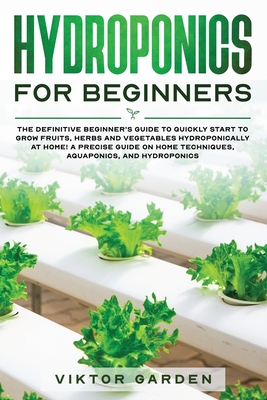You are here
Back to topHydroponics for Beginners: The Essential Guide For Absolute Beginners To Easily Build An Inexpensive DIY Hydroponic System At Home. Grow Vegetabl (Paperback)
(This book cannot be returned.)
Description
Do you want to learn how to quickly grow fruits, herbs and vegetables hydroponically at home?
If yes, then keep reading...
Hydroponics has been adopted in many parts of the world as a commercial farming method and has become an established branch of agronomy. Hydroponic plants can provide you a high yield with very little space and on an economical budget. The amount of investment you do for commercial farming would be many folds higher compared to hydroponic plants. Also, many people prefer hydroponic farming because they can be more easily ensured to be organic and have fewer amounts of chemicals and pesticides.
Hydroponics can be a very fun and rewarding hobby that also provides you and your family quality produce at a very minimum price as compared to your nearest vegetable or grocery market The ancient Aztecs built floating rafts on which they planted vegetable gardens. Europeans have been studying hydroponics since Francis Bacon wrote about his research in the 17th century. The term hydroponics was coined in 1937.
If humans ever colonize the Moon or travel to Mars, hydroponics will make it possible for them to produce food. Already, there is a hydroponic garden at the South Pole
This book covers the following topics:
- What is Hydroponics?
- Advantages and Disadvantages
- Equipment's
- Lighting and Heat
- Hydroponics Grow System
- Different Types of Hydroponics Garden
- Best Plants for Hydroponics
- Nutrient Solutions
- Nutrient
- Most common Problems
- Strategies to avoid insects
- Safeguards
...And much more
All hydroponic systems have a few things in common. The plants are rooted in a growing medium of some sort, typically fiberglass or clay pellets. This medium provides structural support, but no nutrients. The plants are then fed a nutrient solution, in such a way that the roots get all the water and nutrients that they need and enough air to avoid suffocation and decay.
